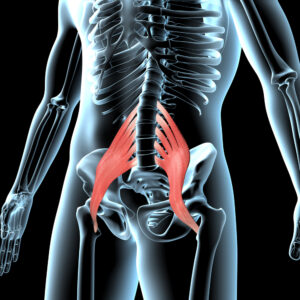There’s lots of reasons to dance in stiletto heels! They look amazing, they can help…

Dear Poler, you’re up to your neck in thoracic dysfunction… Part 1
1.
Dear Poler, you’re up to your neck in thoracic dysfunction… Part 1
If you’ve ever had neck and shoulder pain, you have likely experienced one of the following symptoms:
- A sensation of tightness on one side of the neck that is exacerbated by neck movement (either towards that side or away).
- Loss of overhead motion of the shoulder (the physical therapy terminology would be a “loss of shoulder flexion”) that you perceive as “pinching on the top of the shoulder.”
- Generalized soreness in the shoulders and neck after training pole or aerial that lasts longer than 1-2 days and feels arguably more intense than the workout that you did would suggest.
So, here’s the fun part. It’s entirely possible that NONE of those symptoms stem from either the neck or shoulder. They could (and likely are) coming from mobility issues and a loss of flexibility in the thoracic spine (aka your mid-back).
So…how would you know that’s your issue and what can you actually do about it? Read on!
The body is awesome at compensation. It will steal mobility from one area to accommodate for a loss at another. (And it does so without concern or regard for the long-term outcome of this short-sighted choice.) Let’s break the above symptoms down one by one so you can follow along based on your issues.
You’ve got neck tightness that follows you in pole, at work and basically everywhere:
Our bodies provide feedback about tightness or weakness on a “relative” scale. What this means is that when you perceive something as “tight” your brain is hypothesizing the state of the sensation based on past experience and the signal it is receiving. It’s not as simple as “this muscle (or group of muscles) is truly being stretched”. Rather, the brain has been told that the muscle is not within its resting range or that it is under more stress/stretch than the opposing side by the stretch receptors & motor units of that muscle. These are the neuromuscular feedback points in the muscle that signal varying degrees of stretch or movement in a muscle & submit that signal to the brain. They’re important, but only a messenger – they don’t collaborate or translate.
The brain gets this info and then tries to formulate it into something “useful” for you. What you aren’t getting however, is the information from adjacent muscles that are not under stretch, not moving or not contracting. They aren’t signaling the brain about their lack of motion/lack of stretch and that information is actually really important.
So, when you feel neck tightness, it’s because your neck muscles are under a larger stress/stretch NOT because they’re actually tight as compared to “normal.” It’s trickery really. Your body isn’t able to identify the change in the area moving less (thoracic spine) as it’s providing no feedback. It only hears from the overstretched, overworked muscles (the ones in the neck).
You, in an attempt to solve the problem, do more stretches on your neck. This does nothing for the most part, and may actually aggravate the problem…here’s what you should do instead:
- Stop stretching the neck. It’s overworked & needs a break. Consider some ice to calm down the symptoms and take some of the “hypersensitivity” away.
- Instead, release & stretch the thoracic spine. Try these:
- Thoracic foam rolling: 1 min
- Cat/cow: 10-15 reps
- Disco kitties: (cat/cow but in a circle with the torso): 10x/side
- Thread the needle: 10x/side
- Side lying upper trunk rotation: 1 min per side with deep breathing
*Do all of these 2-3x/week*
Part 2 coming next week!
Latest posts by Angie Prescott (see all)
- Dear Poler, you’re up to your neck in thoracic dysfunction… Part 2 - November 18, 2022
- Dear Poler, you’re up to your neck in thoracic dysfunction… Part 1 - November 11, 2022


